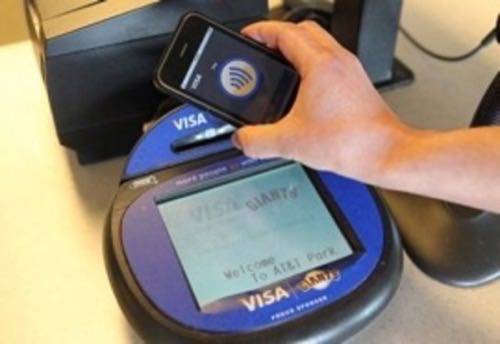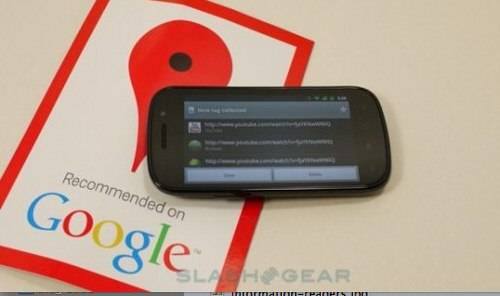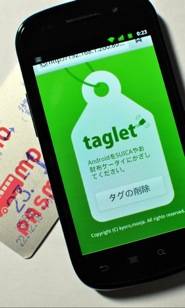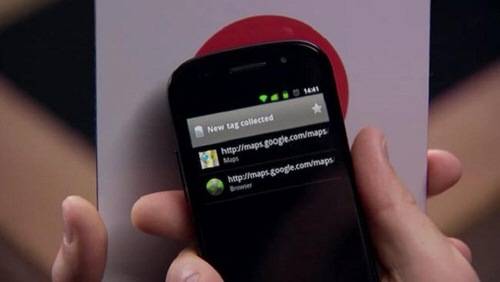NFC is a term you’re going to start hearing a lot more of this year, but many out there don’t know what it means or only have a vague idea. Some equate the term only with mobile payments and mobile wallet initiatives, thinking that NFC is just for making purchases with a phone at the point of sale.

But NFC, or near field communication, as it’s called, is more than that. It’s a technology that is poised to change every aspect of your mobile life from exchanging business cars to “checking in” via location-based apps like Foursquare and, yes, even entirely replacing your wallet’s contents, including credit and debit cards, cash, coupons and more.
Starting today, we’re launching a series on NFC here on ReadWriteMobile which will serve to get you up to speed on what NFC is, what notable developments are underway and what commercial programs using NFC will arrive this year. You can follow this series by clicking the tag (or bookmarking the tag) “NFC 2011.”
Before we can begin talking about NFC developments, advances and upcoming commercial programs, we first have to get you up to speed with what exactly NFC is. Consider this post the starting point for those unfamiliar with the technology.
What is NFC?

NFC is a newer wireless technology that allows devices to communicate with each other over short distances. The data transfer between the devices occurs through one of two means: either a short wave or, as is more common, a touch or tap.
The communication doesn’t have to occur between two handheld devices, like two phones, however. It can also work with a mobile device and a target of some kind – for example, a point-of-sale system at a store’s checkout counter or even something as simple as a tag, sticker, poster, decal or card with an NFC chip embedded. In the case of these simple targets, batteries are not required to power the NFC chips. Instead, the chips are in a passive state, waiting to be activated by another device that can generate a RF (radio frequency) field.
NFC in Mobile: 3 Ways It’s Implemented on Phones
In mobile phones, there are three different ways that NFC can be implemented:
- Fully Integrated into the handset: NFC, especially in newer devices, can be fully integrated into the handset. That means that the NFC controller (the piece that does the actual communication) and the secure element (the secure storage area connected to the NFC controller) are both integrated into the handset itself. One example of a fully integrated NFC handset is the Google Nexus S, Google’s latest flagship phone built in partnership with Samsung.
- On a SIM card: Alternately, NFC can be integrated into a SIM card – the card that identifies a mobile subscriber on an operator’s cellular network.
- On a microSD card: NFC technology can also be integrated on a microSD card, which is a removable storage card that uses flash memory. Many mobile phone owners use microSD cards to store photos, videos, apps and other files in order to save storage space on the phone itself. For phones that don’t have a microSD card slot, accessories like cases or “sleeves” can be used instead. For example, Visa introduced a case for the iPhone which contains a microSD card manufactured by Device Fidelity to bring NFC technology to iPhone users.
Does Your Phone Have NFC?
If you’re not sure if your phone has NFC (or if you’re thinking of buying one that does), NFC World has a great list of current, planned and rumored handsets that support the technology. You can see that list here.
Some notable phones available now (or very soon) that offer NFC capabilities include, as mentioned above, the Google Nexus S, as well as the Samsung Galaxy II (select models), Nokia C7, Nokia C7-00 and the Samsung Wave 578. Wikipedia also maintains a list here.

So What Can I Do With NFC?
Because NFC is still an emerging technology, what you can do with NFC today depends a lot on where you live and what services are available there. In some markets, especially in parts of Asia and Europe, NFC is fairly common. But in the U.S., few mainstream consumers have heard of it.
This year that will change. The U.S. will soon see the rollout of a number of NFC-enabled services including ones for mobile banking, mobile payments and transportation initiatives, in addition to the launch of other consumer-facing applications. Businesses introducing NFC services in the near future (if not already) include major mobile operators, Google (and possibly Apple and RIM), banking institutions and credit card companies like Visa, MasterCard and Discover.
NFC on Mobile Devices: 3 Ways It’s Used
There are 3 primary ways NFC can be used on mobile devices:
- Card Emulation Mode
- Reader Mode
- P2P Mode (peer-to-peer mode)

In card emulation mode, NFC devices can function as credit cards, debit cards, badges or tickets. This is the mode that would enable the “mobile wallet.”
In reader mode, NFC devices can read tags. This is most similar to how barcode scanning works today. For example, you can scan a barcode with an app on your mobile phone to access additional information. Eventually, NFC will displace barcode reading as the technology becomes more widespread.
In P2P mode, NFC devices can exchange information with each other. For example, two NFC phones could exchange contact info, similar to the way apps like Bump for iPhone and Android allows for contact exchange today, but via a different technology.
Example Use Cases
To get a better handle on what NFC could allow for, it’s helpful to look at some specific example use cases for the technology.
Some example uses cases for NFC include:
- Mobile payments (phone acts as a credit or debit card at point-of-sale)
- Mobile ticketing (you pay for a boarding pass on a public transport system like the subway with your phone)
- Smart posters, cards, stickers, etc. (you can tap your phone to a tag embedded in some other object like a card or poster to get access to additional information; for example: tap a movie poster to see a trailer; tap a business card to pull up the contact info on your phone)
- As a substitute for keys (unlock your hotel room door with NFC)
- Access to a network or as a quick way to make a connection (make a Bluetooth connection or log onto a Wi-Fi network by tapping your phone to a tag)
This is not a comprehensive list by any means. – only the beginning.

Thanks to a recent update to Google’s Android mobile operating system, its built-in support for NFC capabilities has been expanded to include not just the ability to read tags, but also to exchange data (read/write capabilities). Already, the Android app store includes a small, but growing, list of NFC-capable apps including those for restaurant coupons, creatingand readingNFCtags, NFC widgets, and others. Except more to arrive on a regular basis in the coming months.
Now that you’ve been primed with information on what NFC is and its possible uses, stay tuned for more details (starting next week) on specific programs and developments you’ll see this year featuring this new technology as this series continues.
Image credits: Slashgear, Techspyeye, Taglet,Visa









